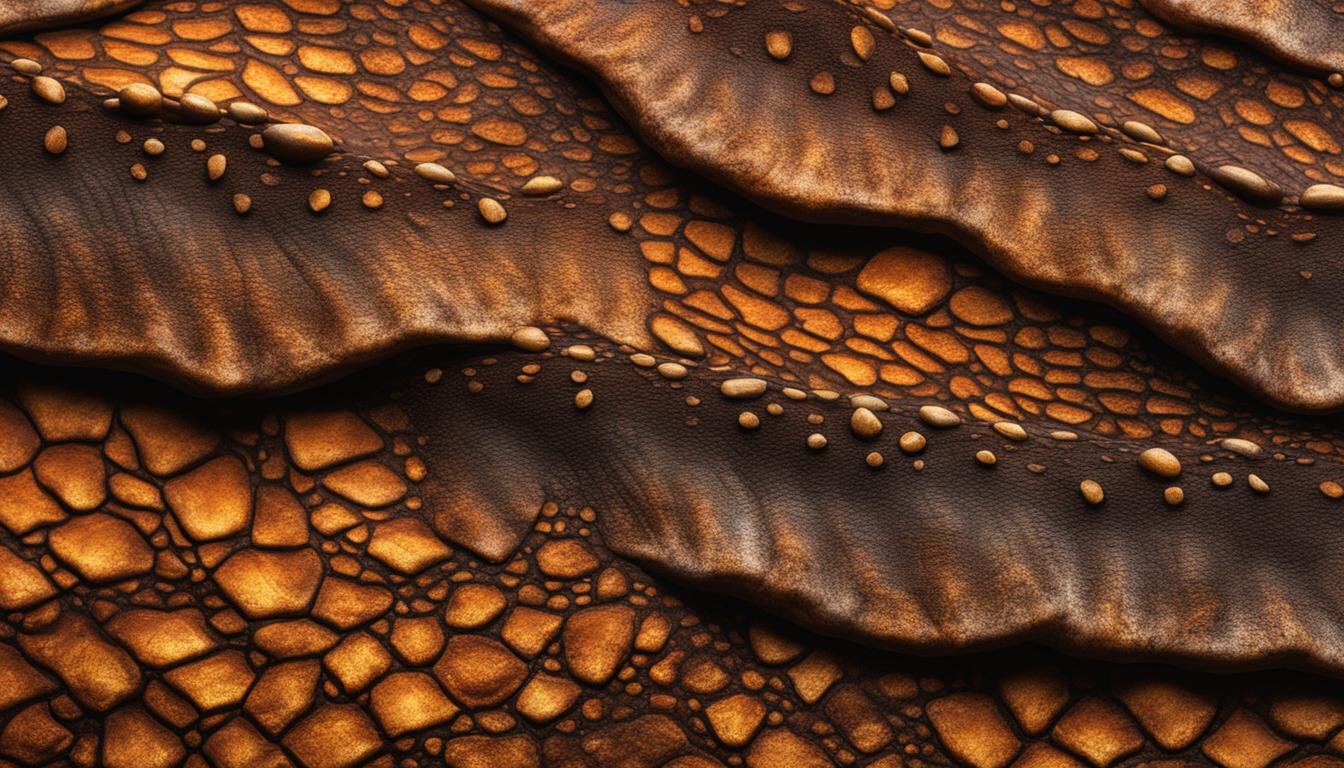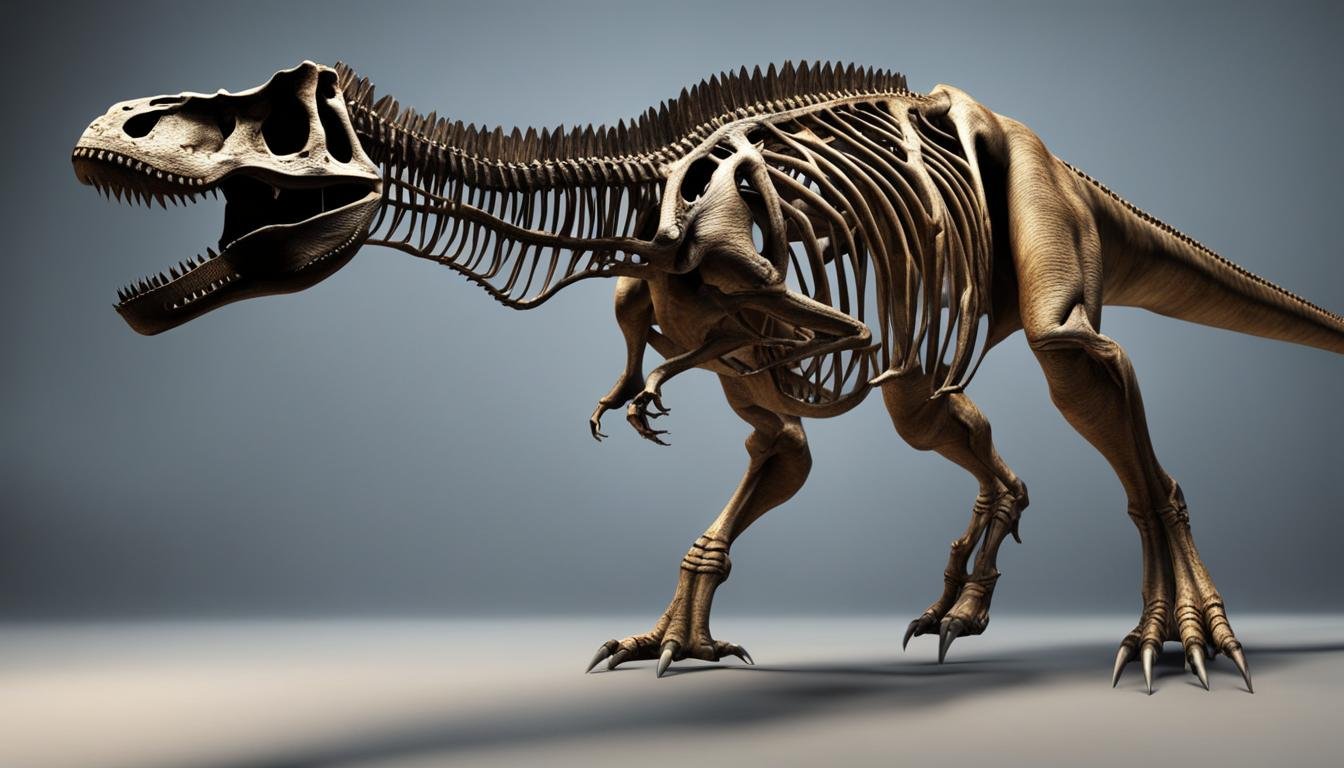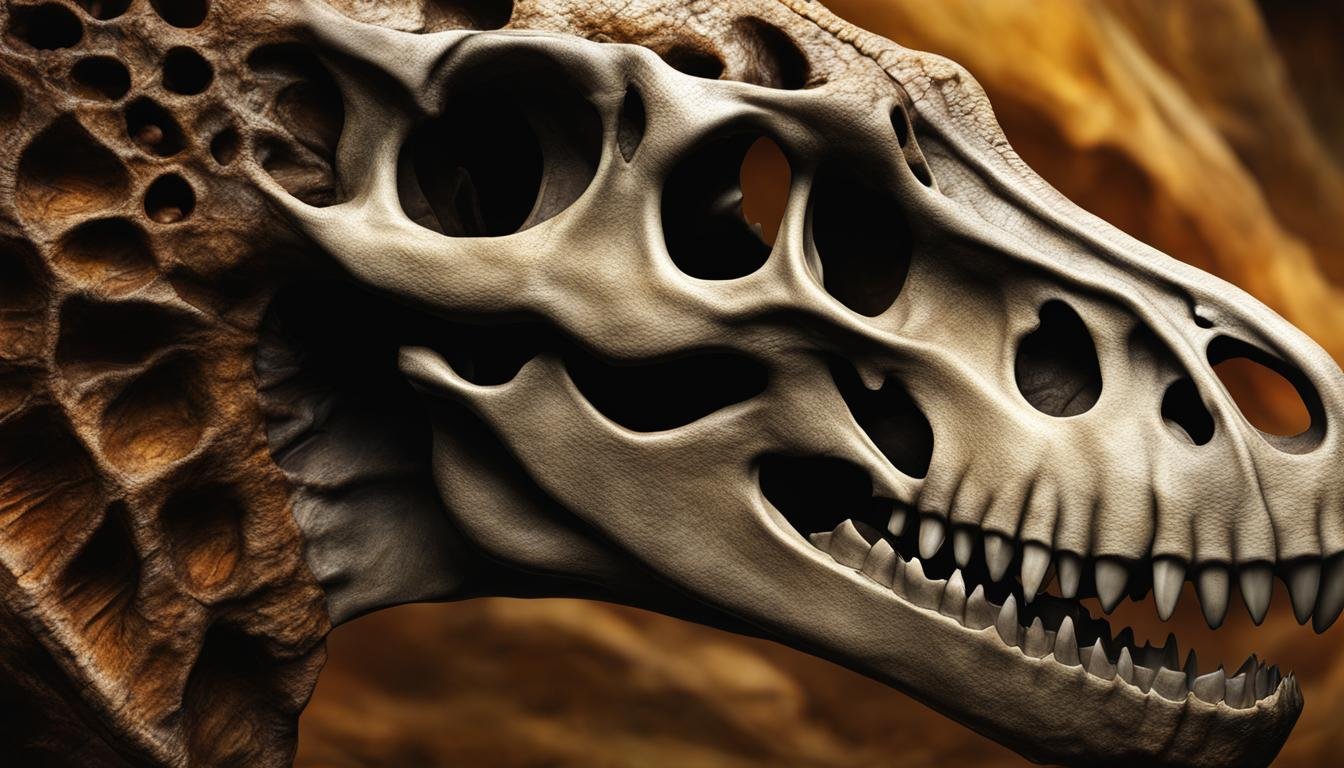Dinosaur skin and dermatological studies provide valuable insights into the structure and composition of ancient reptilian skin. This field of research, known as paleontology, involves the analysis of fossilized skin and the study of prehistoric reptiles. By examining the skin of dinosaurs, researchers can gain a better understanding of their physiology, behavior, and evolution. Through advanced techniques such as fossil analysis and skin structure research, scientists can unlock the secrets of dinosaur skin and its relevance to modern dermatology.
| Main Point | Description |
|---|---|
| Insights from Dinosaur Skin Studies | Research into dinosaur skin and dermatology offers significant insights into the skin of ancient reptiles. |
| Role of Paleontology in Skin Analysis | Paleontology plays a key role in the study of prehistoric reptiles, focusing on analyzing fossilized skin. |
| Understanding Dinosaur Physiology and Evolution | Examining dinosaur skin helps scientists gain a better understanding of their physiology, behavior, and evolutionary journey. |
| Fossil Analysis and Skin Structure Research | Analyzing fossil remains and studying the structure of dinosaur skin are critical methods in this field of research. |
| Relevance to Modern Studies | Studies of dinosaur skin have implications and provide valuable information for modern dermatology and evolutionary biology. |
The Importance of Fossilized Skin in Dermatological Studies
Fossilized skin is a vital resource for dermatological studies, offering direct evidence of ancient reptiles’ skin characteristics and composition. By examining the well-preserved skin specimens of dinosaurs, researchers can gather insights into the evolutionary history of these prehistoric reptiles. The study of fossilized skin provides valuable information about the presence of scales, feathers, or other unique features, allowing us to understand the adaptations that played a crucial role in their survival. Moreover, this research also offers a glimpse into the ancient environment and the intricate interactions between different species.
“The examination of fossilized skin samples not only sheds light on the physical attributes of dinosaurs, but it also provides valuable clues about their behavior and environment,” says Dr. Emma Carter, a leading expert in paleo-dermatology. “Through meticulous analysis, we can decipher the coloration, patterns, and even microscopic structures within their skin, offering a comprehensive understanding of these fascinating creatures.”
Through the meticulous study of fossilized skin, researchers unravel the mysteries of dinosaur physiology and behavior. This research aims to reconstruct their physical appearance, including their coloration and patterns. By understanding the evolutionary changes in skin structure, dermatologists and evolutionary biologists gain insights into the development of integumentary features, such as scales and feathers, over time. This knowledge enables us to trace the evolutionary relationships between different species and better comprehend the adaptations that allowed dinosaurs to thrive in diverse environments.
The advancement of skin structure research, coupled with fossil analysis techniques, has revolutionized our understanding of ancient dermatology. By examining the composition of fossilized skin samples, scientists can identify pigments, proteins, and other biomolecules present in dinosaur skin. This information not only reveals the colors exhibited by these extinct reptiles but also offers valuable insights into their potential functions, such as communication, camouflage, or thermoregulation. Additionally, the identification of microscopic structures within the skin further contributes to our knowledge of dinosaur physiology and provides a deeper understanding of their fascinating world.
| Importance of Fossilized Skin in Dermatological Studies | Ancient Dermatology | Prehistoric Reptile |
|---|---|---|
| Direct evidence of ancient reptilian skin characteristics and composition | Reveals the presence of scales, feathers, and other unique features | Sheds light on the physiology, behavior, and environment of dinosaurs |
| Allows insights into the evolutionary history and adaptations of prehistoric reptiles | Reconstructs the physical appearance, coloration, and patterns of dinosaurs | Traces the development of integumentary features over time |
| Provides valuable information for modern dermatology and evolutionary biology | Unravels ancient dermatology and its relevance to modern understanding | Contributes to a comprehensive understanding of dinosaur physiology |
Dinosaur Dermis and its Significance in Evolutionary Biology
In the field of paleontology, the analysis of dinosaur dermis plays a crucial role in unraveling the mysteries of evolutionary biology. By studying the structure and composition of dinosaur skin, scientists gain valuable insights into the adaptations and transformations that occurred throughout the evolutionary history of these prehistoric reptiles.
Through meticulous skin structure research, researchers can trace the development and evolution of integumentary features such as scales and feathers. This examination allows for a deeper understanding of how dinosaurs adapted to their environments and provides clues about their behavior and interactions with other species.
One of the key aspects of studying dinosaur dermis is its contribution to the reconstruction of evolutionary relationships. By analyzing the skin structure of different species, scientists can determine common characteristics and identify distinct traits that differentiate various dinosaur groups. This information helps create a more comprehensive evolutionary tree and provides important insights into the diversification and specialization of these ancient creatures.
| Dinosaur Species | Skin Structure | Integumentary Features |
|---|---|---|
| Tyrannosaurus rex | Thick and scaly | Lizard-like scales |
| Triceratops | Leathery and rough | Large bony frill |
| Velociraptor | Smooth and feathered | Feathers for insulation and display |
Furthermore, studying the dinosaur dermis through skin structure research also provides crucial insights into the physiological adaptations that allowed these reptiles to thrive in different environments. By examining the microscopic structures within the skin, such as dermal papillae and melanosomes, scientists can gain a better understanding of the thermoregulatory capabilities, pigmentation, and even potential communication methods of dinosaurs.
Through the integration of skin structure research, fossil analysis, and evolutionary biology, scientists can unlock the secrets hidden within dinosaur dermis. The knowledge gained from these studies not only enhances our understanding of ancient reptiles but also contributes to the field of modern dermatology and evolutionary biology as a whole.
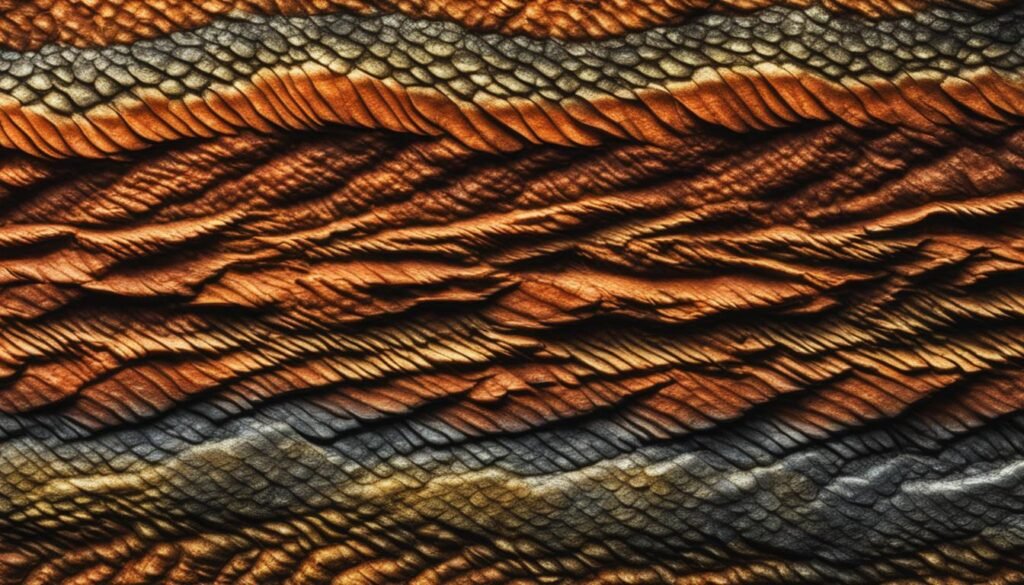
Unveiling the Secrets of Dinosaur Skin through Fossil Analysis
Fossil analysis is a crucial tool in unraveling the mysteries of dinosaur skin. By examining fossilized skin samples, scientists can gain valuable insights into the physical properties and composition of these ancient reptiles’ integument. Through meticulous examination, researchers can determine the presence of pigments, proteins, and other biomolecules that once existed in the skin of dinosaurs.
The information derived from fossil analysis provides a glimpse into the vibrant colors and intricate patterns displayed by dinosaurs. These colorations may have played important roles in communication, camouflage, or even thermoregulation. By understanding the coloration of dinosaurs, scientists can paint a more vivid picture of these long-extinct creatures and gain deeper insights into their behavior and environmental adaptations.
“Fossil analysis allows us to peer into the past and visualize dinosaurs in living color.” – Dr. Laura Parker, Paleontologist
In addition to analyzing pigments, fossil analysis also enables the identification of microscopic structures within dinosaur skin, such as dermal papillae or melanosomes. These structures provide further evidence of the anatomical complexity and functionality of dinosaur skin. By comparing these structures across different species, scientists can uncover evolutionary relationships and trace the development of integumentary features throughout the dinosaur lineage.
| Advantages of Fossil Analysis in Understanding Dinosaur Skin | Limitations of Fossil Analysis in Understanding Dinosaur Skin |
|---|---|
|
|
While fossil analysis is a powerful tool, it does have its limitations. The preservation of skin fossils is often incomplete, making it challenging to obtain a complete picture of the skin’s structure and composition. Additionally, the availability of well-preserved specimens is limited, as the process of fossilization itself is a rare occurrence. Scientists also face difficulties in differentiating between different skin layers and are unable to observe soft tissue features through fossil analysis alone.
Despite these limitations, fossil analysis continues to shed light on the secrets of dinosaur skin. It allows researchers to explore the fascinating world of ancient reptilian integument, providing important clues about the physiology, function, and evolution of these remarkable creatures.
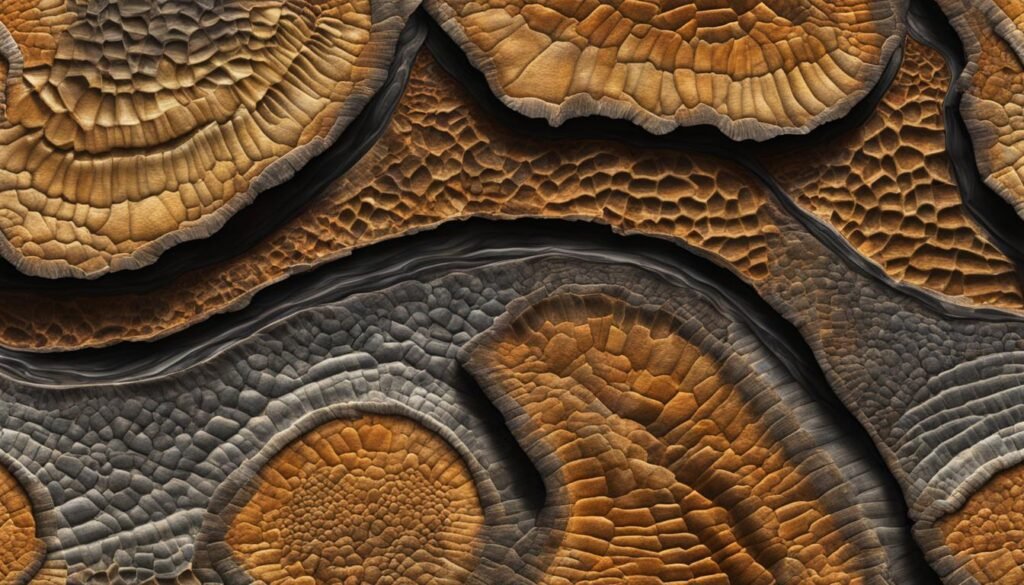
Further Insights from Fossil Analysis: An Example
In a recent study, scientists used fossil analysis to examine the skin of a well-preserved dinosaur specimen. Through the identification of melanosomes within the skin, the researchers were able to determine the dinosaur’s coloration patterns. The findings revealed a striking camouflage pattern, suggesting that the dinosaur employed visual camouflage to blend into its environment and evade predators.
This example demonstrates the power of fossil analysis in providing detailed insights into the behavior and adaptations of dinosaurs. By combining the analysis of pigments, skin structures, and other features, scientists can continue to unravel the mysteries of dinosaur skin and gain a deeper understanding of these magnificent creatures that once roamed the Earth.
Conclusion
In conclusion, dinosaur skin and dermatological studies are fascinating fields within paleontology that provide valuable insights into the world of prehistoric reptiles. By analyzing fossilized skin, scientists can uncover the physical characteristics, composition, and even coloration of dinosaurs, offering a glimpse into their ancient dermatology.
Through advanced techniques like fossil analysis and skin structure research, researchers can reconstruct the physiology and behavior of these creatures, as well as gain a better understanding of their evolutionary history. This knowledge not only expands our knowledge of the past but also contributes to modern dermatology.
By studying dinosaur skin, we can learn more about the adaptations that allowed these prehistoric reptiles to thrive in their environments. The analysis of fossilized skin provides insights into factors such as climate, behavior, and interactions between species, painting a more complete picture of the ancient world.
Overall, dinosaur skin and dermatological studies offer a unique window into the past, helping us unravel the mysteries of these magnificent creatures and applying that knowledge to advancements in modern dermatology.

